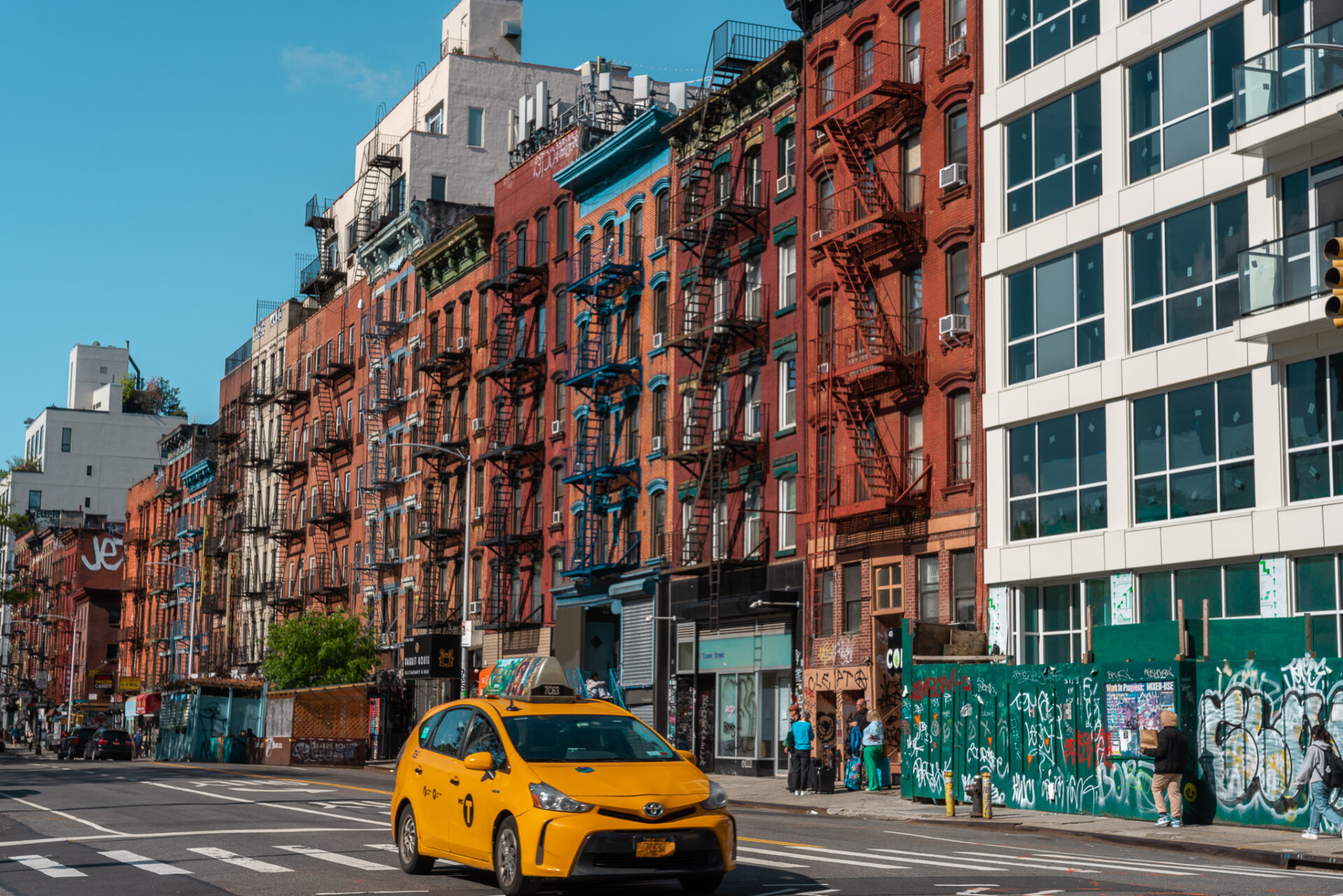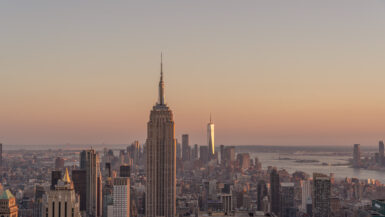The Lower East Side is an incredibly historically rich district. In the past, it was an immigrant neighborhood and New York “slums,” where poor newcomers from Europe lived in cramped conditions. The district was first settled by German immigrants, which is why it was initially called “Little Germany.” Soon after, it became a true melting pot of nationalities, including Jews, Italians, Irish, Poles, Ukrainians, Russians, and many others. Here, we present to you 7 places to see in the Lower East Side that will allow you to learn about its history and experience its atmosphere.
Currently, the Lower East Side is becoming increasingly trendy and is gradually being gentrified. Despite this, you can still feel a somewhat rebellious character in the neighborhood, a unique “otherness” in the New York sense. It has an indescribable allure that draws people in with its hipster atmosphere and unconventional vibe. We’re sure that not everyone will be fond of the Lower East Side, but if you’re looking for something distinctive, heading towards downtown Manhattan is definitely worth considering.
Who will fall in love with the Lower East Side? Food enthusiasts from around the world, fans of speakeasy-style bars, as well as lovers of quirky shops and second-hand stores. Anyone who enjoys observing local life and people, not just checking off the usual tourist sights. 7 places to see in the Lower East Side may not sound like a lot, but that’s a beauty of this place – focus on vibe, not places to tick off from the list and discover on your own!
Eldridge Street Synagogue – 7 places to see in the Lower East Side
In our opinion, one of the most beautiful and lesser-known places to visit in New York! The Eldridge Street Synagogue, now a museum, is located at the southern end of the Lower East Side near Chinatown. The influences of Chinatown are evident around the synagogue building, which blends into the urban townhouses. Due to the cultural diversity in this area, where Jewish culture (slowly fading in this neighborhood) intersects with Chinese and Latin cultures, the ‘Egg rolls, egg cream & empanadas’ festival is held on June 18th. During this festival, you can try Chinese egg rolls, the beloved egg cream (a drink made from seltzer, milk, and sweet chocolate syrup) adored by Jewish children, and baked empanadas from South America.
The Eldridge Street Synagogue was built in 1887 by Jewish immigrants from Eastern Europe. The Lower East Side was a neighborhood of poor immigrants during that time and was said to be the most densely populated place on earth. It wasn’t an easy place to live, and all the beautiful synagogues were located far from the Lower East Side, in the wealthier parts of the city inhabited by more affluent Jews. The residents of the Lower East Side decided to build their own synagogue, which remains impressive to this day.
Over the years, the Jews residing in the Lower East Side became more affluent and moved to more desirable parts of New York, causing the congregation’s size to dwindle. At some point, the synagogue started to deteriorate due to the lack of worshippers and the means to maintain it. Its restoration began in 1986, lasting 20 years and costing $20 million. After the renovation, the synagogue was transformed into a museum.


Tenement Museum – 7 places to see in the Lower East Side
This museum, despite our sincere intentions, eluded us during two visits to New York. The challenges of planning the last day in the city, which drains your energy, usually leave no energy for anything else! And so it was with the Tenement Museum on Orchard Street. However, this place is so fascinating that we know we will definitely get there sooner or later!
The Tenement Museum is located in an old tenement building that has survived to this day in practically untouched condition. The Lower East Side was once a neighborhood of tenements, where densely packed apartments housed poor people. Conditions were inhumane, often with multiple people crammed into small apartments, in some cases taking turns sleeping due to the lack of space, without proper toilets. The Tenement Museum showcases how the poor of New York lived 100 years ago. Various tour options are available, touching on different themes and issues.
Essex Market – 7 places to see in the Lower East Side
If you enjoy indoor food markets, Essex Market deserves your attention! You’ll find plenty of eateries as well as shops selling various products.


Hamilton Fish Park – 7 places to see in the Lower East Side
An open-air swimming pool in Manhattan? It might seem impossible, but there are actually quite a few public pools in New York where you can find relief during hot summers. Hamilton Fish Park is a small park with an Olympic-sized pool, as well as shallower pools for children and playgrounds. The Hamilton Fish Recreation Center building, designed in 1900, stands out with its beautiful façade.


East Houston Street – 7 places to see in the Lower East Side
East Houston Street is the bustling heart of the district. Along this street, you’ll find several iconic establishments such as Katz Delicatessen and Russ & Daughters. It might not be the most beautiful street in New York, but it certainly captures the essence of the neighborhood, featuring murals and remnants of the Jewish community in the form of restaurants and delicatessens.


Seward Park – 7 places to see in the Lower East Side
If wandering around the Lower East Side tires you out, you can take a break at the small Seward Park. The Lower East Side isn’t as green and dotted with communal parks and gardens (which we mentioned in this post) as the East Village. Seward Park is one of the larger green spaces in this neighborhood. It also has something for the youngest visitors – playgrounds and sports fields.
East River Park – 7 places to see in the Lower East Side
To the east of FDR Drive, along the East River coastline, is a park with the same name as the river—East River Park. It’s a linear park running along the waterfront, which is currently undergoing expansion. From this perspective, you’ll see the Williamsburg Bridge, connecting the Lower East Side to Williamsburg.
Heading north, you’ll reach the East Village and see Alphabet City, a part of the district named after avenues labeled with letters from A to D. As you might know, New York avenues are numbered from 1 to 12, but due to the “protrusions” of the island in this location disrupting the numbering order, avenues were named with letters from A to D, starting from the east (Avenue A is closest to the river) to Avenue 1, which is located west of Avenue D.









